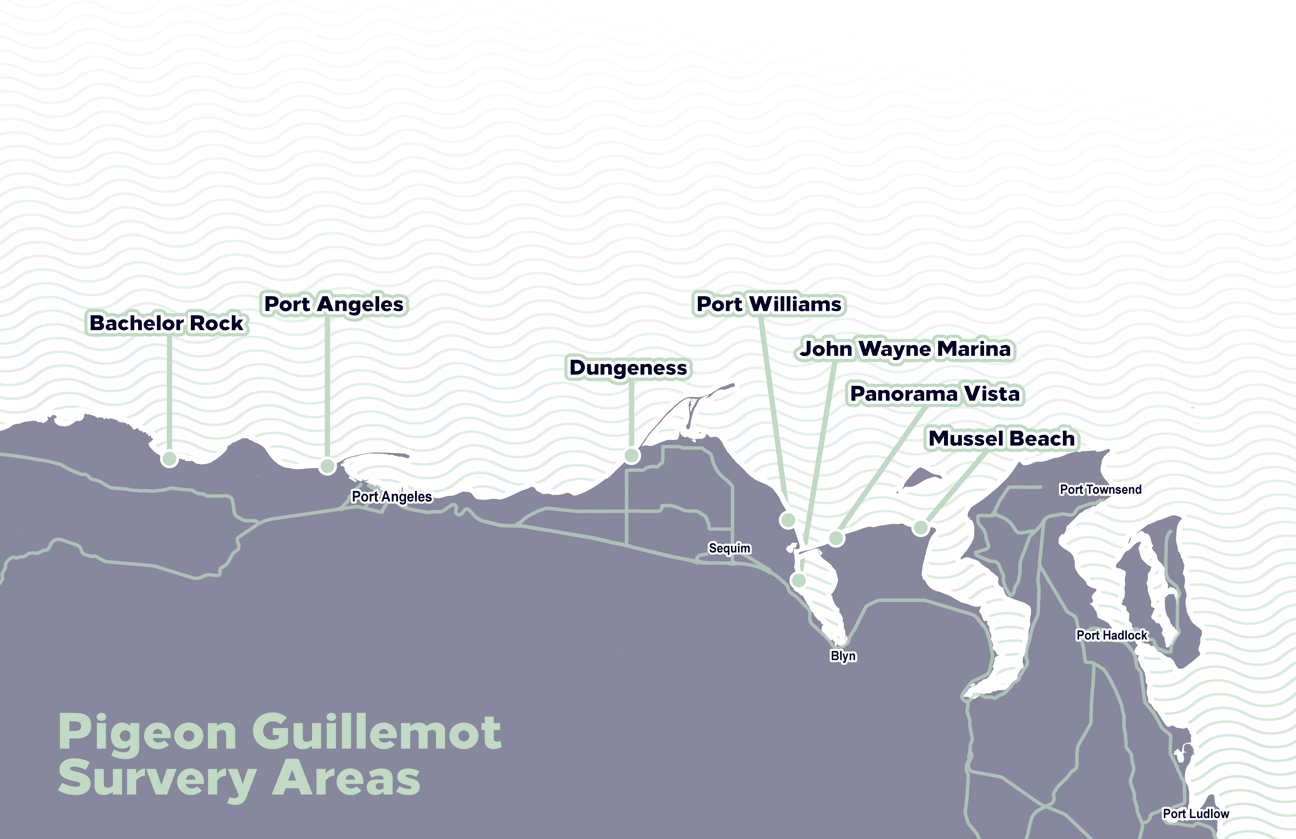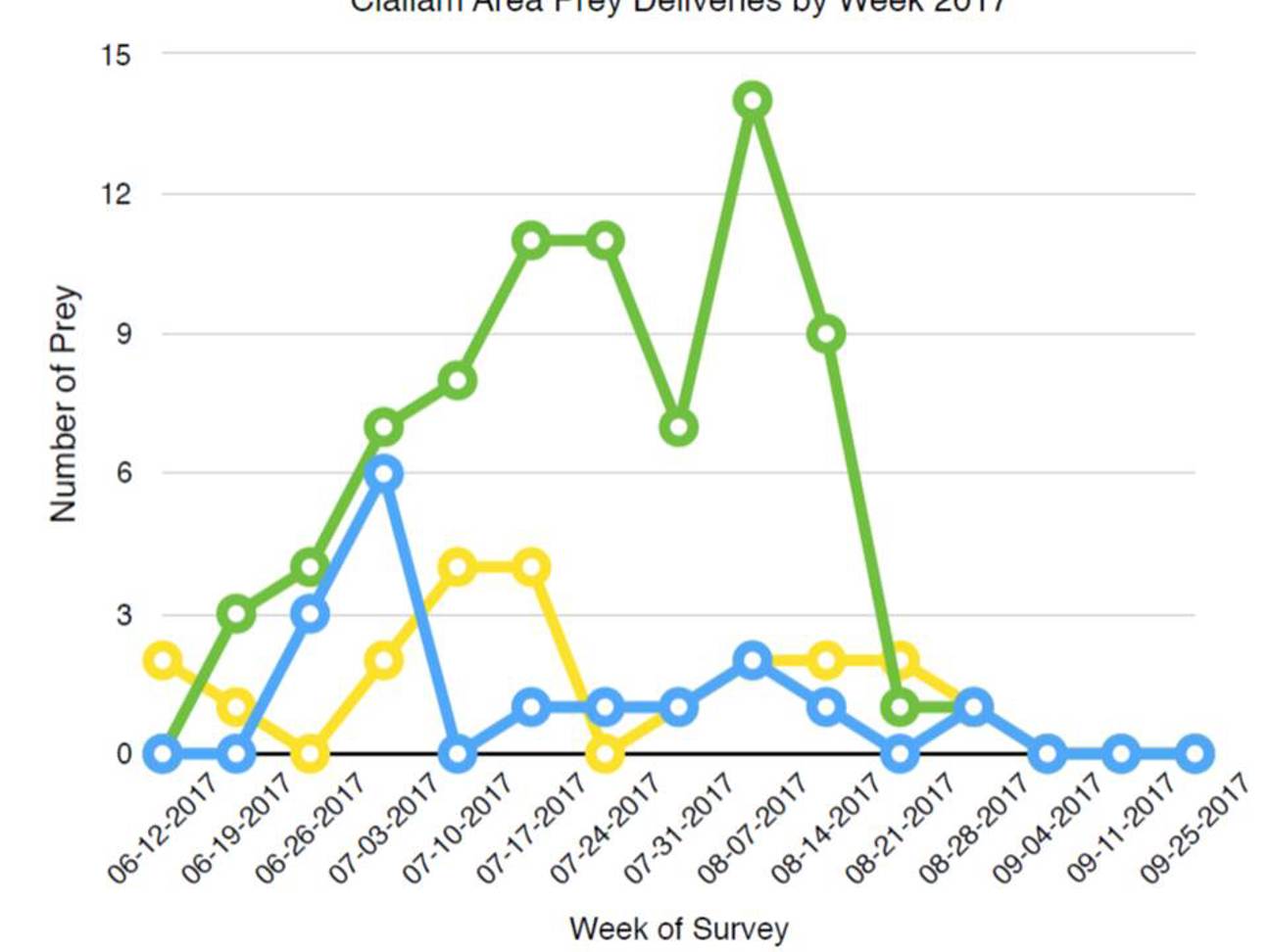Pigeon Guillemot Survey
Currently seeking volunteers for the 2024 monitoring season! Contact Ed Bowlby (edbowlby2@gmail.com) if you're interested.
The pigeon guillemot is considered an indicator species of nearshore health, since this bird feeds heavily on forage fish and other small marine creatures it catches by diving beneath the surface. In May and June, pigeon guillemots lay eggs and by end of June, the birds are busy providing fish for the juveniles in the burrows.
In 2016, the pigeon guillemot survey project was initiated in collaboration with Island MRC and Olympic Peninsula Audubon Society. Each survey consists of one hour monitoring of the breeding colony before 9 am, once a week from June through September. The number of survey sites each year depends on the number of volunteer surveyors.
2020 Survey efforts
In 2020 32 volunteers monitored the breeding colonies at six geographic areas including Bachelor Rock, Port Angeles (Crown Park), Dungeness Spit, Port Williams, Panorama Vista (2 sites) and Mussel Beach. Because Port Williams area supports many breeding colonies this area was divided into 10 sites.
2019 Survey Efforts
In 2019 22 volunteer surveyors monitored the breeding colonies at 11 sites. The sites included Bachelor Rock in Freshwater Bay, Dungeness Spit, Port Williams (7 sites), John Wayne Marina and Mussel Beach.
2018 Survey Efforts
The 2018 monitoring effort got off to a successful start. In early June 50 volunteers started surveying the breeding colonies at 16 sites. These sites included Bachelor Rock in Freshwater Bay, Port Angeles, Dungeness Spit, Port Williams (8 sites), John Wayne Marina, Panorama Vista (2 sites) and Mussel Beach.
2017 Survey Efforts
The 2017 monitoring of breeding colonies got underway in early June and the effort was expanded to six areas in Clallam County including Panorama Vista, Port Williams, Dungeness Spit, McDonald Creek, Port Angeles, and Bachelor Rock in Freshwater Bay. The bluff at Port Williams was very long and required five monitoring sites. The 10 colonies were surveyed by 25 volunteers.
2016 Survey Efforts
The initial survey effort covered five sites near Sequim of which two were located at Dungeness Spit and three at Port Williams. The weekly surveys were conducted by 14 volunteers.

Database and Analysis
The survey data is entered into a regional database available for the public. The first survey effort in 2016 documented a total of 310 adults of which 40% attempted to breed. The most common prey items brought to the breeding colonies are gunnels and pricklebacks (2017 - 67%; 2018 - 52%) and sculpins (2017 - 19%; 2018 - 26%). The figure below shows the prey deliveries by week in 2017.
Resources
